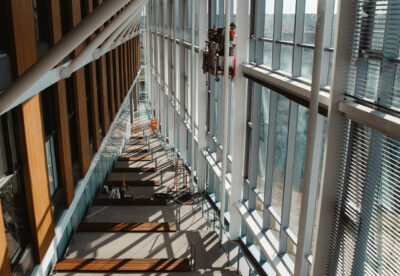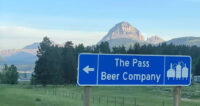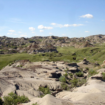University of Lethbridge’s Science Commons achieves Gold LEED status
By Alejandra Pulido-Guzman - Lethbridge Herald on January 26, 2022.
 University of Lethbridge photo
Science Commons Wintergarden is heated and cooled naturally by fresh air and a windowed, south facing facade.
University of Lethbridge photo
Science Commons Wintergarden is heated and cooled naturally by fresh air and a windowed, south facing facade.LETHBRIDGE HERALDapulido@lethbridgeherald.com
The University of Lethbridge’s Science Commons building has achieved Gold status in Leadership in Energy & Environmental Design (LEED).
“During the design and construction phases of Science Commons there was a very intentional and significant emphasis on sustainable planning,” said Gene Lublinkhof, director, campus development, in a press release.
He added that having previously achieved LEED Silver status on the 1st Choice Savings Centre for Sport and Wellness, the Alberta Water and Environmental Science Building (AWESB) and Markin Hall (Dhillon School of Business and Faculty of Health Sciences), they have consistently incorporated sustainability practices into both the construction and ongoing operation of their new buildings.
“To now achieve a gold standing with Science Commons is testament to what we have learned over the years and our commitment to leading the way in sustainability efforts,” said Lublinkhof in a press release.
LEED uses 60-plus criteria to gauge the ability of a project to meet rigorous environmental standards established by the Canada Green Building Council in seven major categories. These categories include sustainable sites, water efficiency, energy and atmosphere, materials and resources, indoor environmental quality, innovation in design, and regional priority. Each project must apply for LEED status and, after being judged, is rated on a point scale.
Some examples of sustainability features and practices incorporated into the Science Commons include:
• Double exterior façade and automated opening windows. This natural ventilation strategy allows building operators to program the windows to open and close to respond to exterior conditions, thereby reducing the energy required for mechanical systems to heat or cool air.
• Automated low flow fume hoods
• Heat recovery technology to reuse thermal energy as it leaves the building to pre-heat or cool incoming air (depending on season)
• Waterless washroom fixtures
• Recirculating cooling system that routes coolant to more energy-intensive scientific instrumentation
• Daylight intensity lighting controls
• Construction strategies to select regionally sourced materials, utilization of low emission adhesives and paints, and reduction of composite materials off-gassing
• PCL Construction separated all construction waste into categories and tracked all outgoing debris to either be recycled or disposed of responsibly
• Continued implementation and enhancement of green caretaking and storage and collection of recyclables previously established in LEED silver projects and utilized throughout campus
Lublinkhof noted in the press release that the University employed a number of business strategies that, while not mandated by LEED, significantly enhanced the building’s sustainability.
Follow @APulidoHerald on Twitter
4-3




